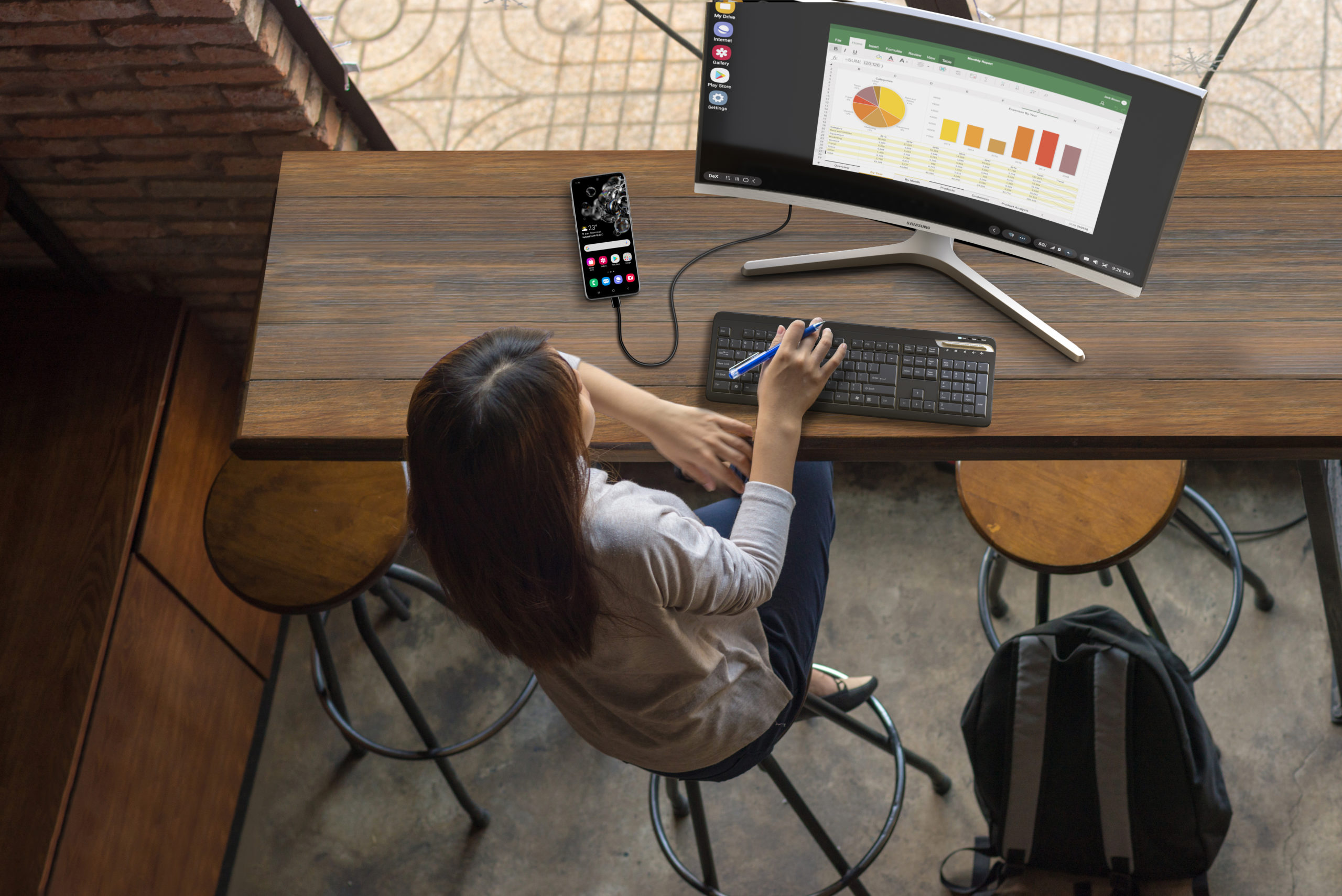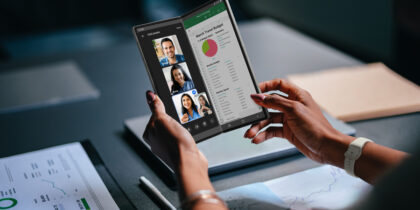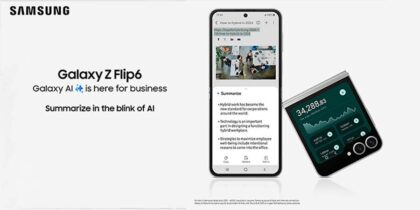Samsung DeX represents a paradigm shift for organizations that embrace technology: replacing traditional Windows-based desktops and laptops with Samsung smartphones and tablets. DeX is the Samsung platform that brings a desktop-like user experience to Android, and helps to bridge the obvious gap between smartphones and desktops.
For any workforce, shifting from Windows to Android with DeX is a big deal, and this kind of change is best accomplished in careful, measured steps. Here are five steps to help position your DeX pilot for success.
1. Get everyone on board with a mobile-only strategy
Transitioning to a mobile-only strategy requires strong management buy-in. If IT pushes a mobile strategy prematurely, they may be seen as overly zealous and receive line-of-business (LOB) or user pushback. When the direction is supported by multiple members of the C-suite, however, LOB managers will see this as part of company strategy, not just an IT-driven initiative.
Often the CIO and IT team’s role is to remain backstage, directing various departments and informing them of what can and cannot be done, how to get the most out of the upgrade and what the advantages to the organization will be. Mobile-only strategies are out-of-the-box for many organizations, so having both IT customers and IT visionaries at the table gets things moving in the right direction.
Once a strategy is in place, you should take a 360-degree view of mobile and desktop computing in the organization, considering both the end-user and IT points of view, before you start to roll out any pilot users.
2. Enable familiar productivity applications
Users’ opinions and enthusiasm for the transition to DeX will be determined by whether they can get their jobs done and their applications available and working. An application inventory will help divide things into three clear categories: existing mobile applications, in-browser applications and Windows-only applications.
- Mobile applications: For Android applications, the user experience is seamless in Samsung DeX — although everything should be tested. DeX works with every Android application, but apps that aren’t optimized may display unusually. You can optimize your own applications for DeX to take advantage of the extended user interface features such as larger and resizable windows.
- Web-based applications: You probably already know how well each of your critical web-based applications works in standard mobile browsers. Test within DeX to verify, and divide them into two categories: those that just work, and those that don’t. Treat the latter as if they were Windows-only applications.
- Windows-only applications: The best option is to swap desktop-only applications, such as Adobe Photoshop, one-for-one with mobile versions. Some may also be available in web-based versions that run in browsers. If you can’t exercise either of these options before the pilot starts, you can leverage virtual desktop infrastructure (VDI) such as Citrix Workspace, Amazon Workspaces or VMware Workspace ONE to bridge the gap.
Remember when you’re inventorying applications to include non-business applications, such as streaming music and video services or even shadow IT solutions that employees may not want to admit to using but that get them through the workday. Make sure you capture everything.
3. Design your IT support plan
DeX is enabled by the power of your smartphones, but there’s still IT infrastructure in the background that has to be ready, just as there would be for any major hardware change. In the long run, management costs and complexity will drop, but like any change, you have to be prepared for the short-term shift.
Go mobile-only with Samsung DeX
Your comprehensive guide to rolling out a mobile-only solution for your workers. Download Now
IT managers should self-check to be sure that they’re ready for mobile-only with DeX by looking at:
- Policies: DeX creates changes in computing environments, and old Choose Your Own Device (CYOD) and Company Owned/Personally Enabled (COPE) policies may need to be revisited to be sure they address the smartphone as a business-critical computing element.
- Security: Information security teams can get caught flat-footed if you spring DeX on them too late in the game. Make sure they know the shifting endpoint and application access model you’re about to roll out — and are ready with any changes they feel are necessary.
- Infrastructure software and hardware: The importance of mobile device management (MDM) or enterprise mobility management (EMM) and VDI increase with a DeX rollout, as they comprise your primary strategy to manage devices and deliver access to Windows-only applications. Check both and tune-up as necessary. Also, don’t forget that DeX can shift from wired to wireless Ethernet, so verify that your Wi-Fi network has the security and capacity to handle the change.
4. Put the right hardware into place
The core of the mobile-only strategy is the smartphone (or tablet), so it’s a good idea to start with Samsung’s newest premium smartphones, such as the Galaxy Note20 or Note20 Ultra and the Galaxy S20, S20+ or S20 Ultra. The Galaxy Tab S7 and S7+ and rugged Galaxy Tab Active Pro are also compatible with DeX.
In the office or at home, every user will need a DeX adapter or Miracast-enabled display. You can reuse existing keyboard, mouse and monitor hardware, or do a refresh if you prefer.
IT managers can easily and economically set up hot-desk environments — not just in traditional offices but also in break rooms and other common workspaces. Similarly, conference rooms with hard-wired, non-Miracast displays should have a Samsung HDMI adapter added to make it easy for DeX users to connect for presentations.
DeX users will want to take advantage of mobile computing at home and on the road, so having extra Samsung HDMI adapters to hand out along with Bluetooth keyboards and mice can help end users leverage their new-found mobile computing environment to be more productive wherever they want to work.
5. Find your champions
When planning your pilot, pick groups that will see the most value the most rapidly and with the least disruption. Focus on groups who have high collaboration (such as strategists, managers and marketers), high contact (such as pre- and post-sales and field service) and high mobility (such as telecommuters, branch office workers and traveling teams). These groups frequently move around both in and out of the office, and value lightweight tools. They will be quick to embrace the additional power of DeX in an already mobile environment.
That said, even the most savvy users will need training, not just on DeX itself, but also on any changes to their day-to-day work style that a mobile-only computing environment will present. At the same time, make sure your help desk is ready and has been trained to deliver support to any DeX users that need it.
You probably already have a plan to deal with broken PCs and laptops, but don’t forget that you’ll need spares for smartphones and tablets in your DeX pilot. Smartphones can get lost and damaged just as easily as laptops, so plan accordingly and stock up with extra hardware — and ensure you have remote wipe set up in the event of a lost or stolen device.
Keep in mind that every pilot will run into challenges, speed bumps and bottlenecks — and these have to be considered as part of the process rather than showstoppers. Deal with issues as they arise and make sure you have a stable base before continuing on. Follow a simple cycle as you spread out from pilot to pilot:
- Deploy DeX to a group of pilot users.
- Verify that everything works and users are comfortable in the mobile-only environment.
- Correct mistakes and collect lessons learned, then implement feedback for the next group of pilot users.
One of the goals of the pilots is to create evangelists within the organization to help you sell the transition. Someone who can offer their peers a great first-person account of their mobile-first DeX experience is the best salesperson for your next pilot group.
Learn more about unlocking the power of a computer that’s already in your pocket with DeX. Then get the full, free guide to going mobile-only with DeX.







